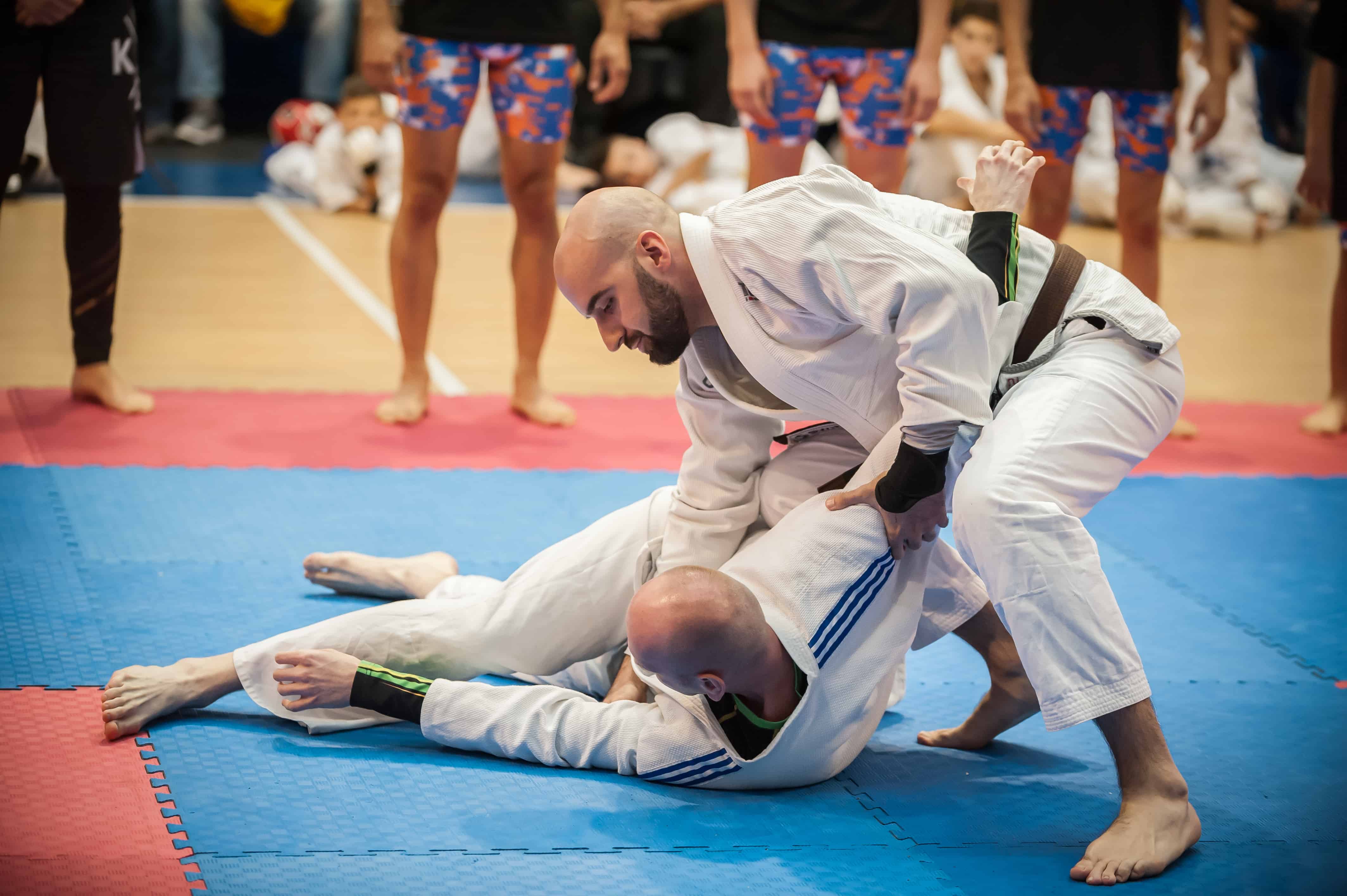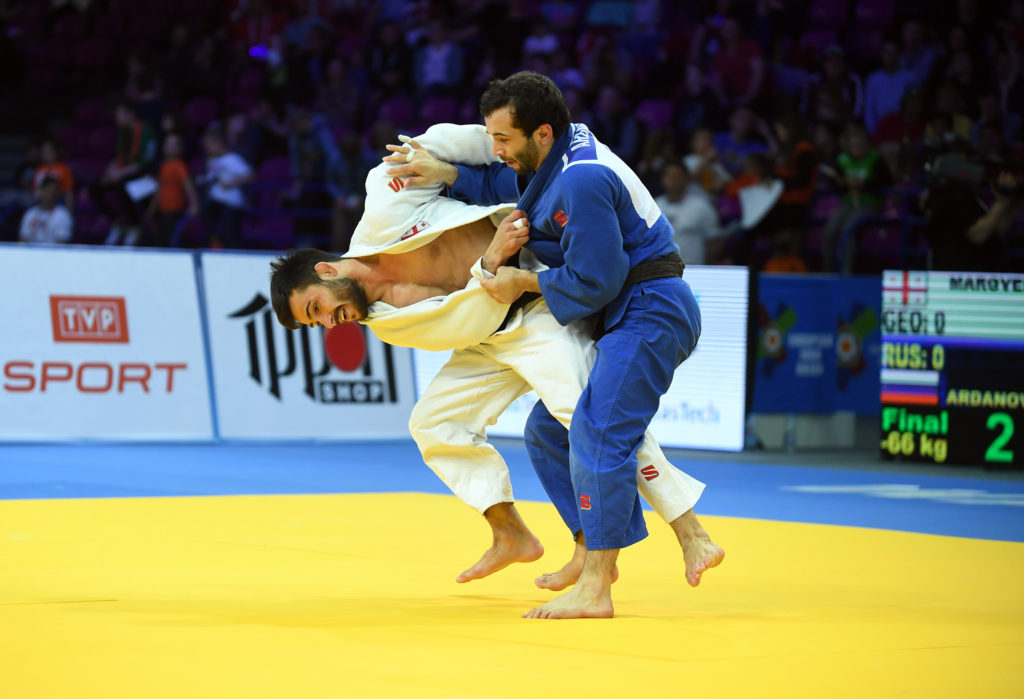Are Judo throws allowed in Wrestling?
Though Judo and wrestling look quite different, if you take a closer look, they have a lot in common.
The main goal of both martial arts is to get your opponent to the ground, therefore, there are many techniques that are interchangeable.
This begs the question, are judo throws allowed in wrestling, and if so, to what extent are they effective?
Well, the simple and quick answer is yes, Judo throws are allowed in wrestling. The same throws are also used in BJJ which originates from Judo – however BJJ is more ground technique focused than throwing.

However, for the most part, for Judo throws in wrestling, they are slightly modified or may even have different names when used in Wrestling.
This is mainly because of the difference in the stances used by Judo practitioners and wrestlers.
The other very major contributing factor to the difference between Judo and wrestling throws is of course the Judo gi which can be gripped and used as on offensive weapon to dominate your opponent.
Specific Judo throws allowed in wrestling include:
- Ogoshi
- Uchimata
- Ouchi gari
- Ashiwaza
- Morote Gari (now banned in Judo)
These throws are discussed more in this post with regards to execution in Judo vs Wrestling – especially controlling the gi.
Wearing the Judo Gi Influences Throws
The most obvious difference is that Judo is practiced wearing a gi, which can be gripped to get better control and leverage to take down your opponent.
On the other hand, in wrestling grabbing your opponent’s clothes is not allowed, moreover, the wrestling singlets make it quite difficult to get a grip.

Furthermore, the final effect of judo throws might also be slightly different in wrestling, particularly the position in which your opponent ends up on the ground.
This may happen because of two reasons, firstly the lower stances used in wrestling and secondly because wrestling continues after the takedown, and wrestlers will try to turn to their knees as quickly as possible to avoid getting pinned.
Therefore, for many Judo techniques that are used in wrestling, there have to be some changes made, especially in the grips.
For the most part, the footwork remains the same.
an underhook, which, without a gi is how you perform an uchi mata. An underhook serves the same function as grabbing the collar/high lapel on a gi by controlling their center of gravity.
Judo Throws Allowed in Wrestling
To answer the question, “Are judo throws allowed in Wrestling”; below are some specific Judo throws that are allowed in wrestling.
Judo Ogoshi – Wrestling Hip Toss
One of the best examples of this is the Ogoshi, which is one of the most popular and basic throws in Judo but is also very common in freestyle wrestling.
If you are a wrestler, you probably know this move as the hip throw or the front headlock takeover, but the move is inspired by Judo Ogoshi.
The idea is to turn and get your hips under your opponents, then using your hips as a fulcrum, you throw your opponent over your hips on the ground.
In judo, this is usually done with a sleeve grip, and the other hand grabbing the back fabric on the gi or the opponent’s belt.
However, in wrestling, you don’t have these grips. Still, the hip throw or Ogoshi can be executed from multiple positions, most commonly the over-under.
The first step is to push on your opponent’s hip to create some distance, then as they move forward to fill it and get back into a good stance, you pin their underhook arm and use your own under hook to grab on their back as you turn your hips into them, and toss your opponent to the mat.
Judo Uchimata – Wrestling
The Uchi Mata is another Judo throw commonly used in wrestling, however, when it is done without a gi, some wrestlers and grapplers refer to it as the dirty Uchi Mata.
In Judo, it is done with a grip on the back of the gi, however, it can also be done with a high under hook in wrestling, from the over-under position. This move does require you to turn your back towards your opponent either, so it is also lower risk and can result in a heavy slam.
Judo Ouchi Gari – Wrestling – Inside Trip
Ouchi gari and ‘major inner reap’ is a technique from Judo that involves ‘reaping’ the inside of your opponents leg and driving his balance backward.
In Judo the standard sleeve and collar grip is used.
But many Judoka have their own variations.
In wrestling the inside trip is the equivalant of the Judo Ouchi gari.
Attacking the inside of you ropponents leg by reaping with the outer part of your leg, the aciton is the same as in Judo for the most part.
Without the gi grips you need to control one arm and you can also use your hips to drive the opponent backward as in the video below.
Foot Sweeps – Ashiwaza
Foot sweeps can also be quite effective in wrestling, especially in high-level wrestling, and they aren’t expected by opponents, and even if they aren’t successful, these low-risk moves allow for better setups.
Though these judo movies are fairly common, one of the things that I’ve noticed is that they are more prevalent with Russian wrestlers or wrestlers who come from areas where Judo is more influential.
The American style of wrestling is a bit different, and though these moves are used, maybe they aren’t as common.
Morote gari – Double-leg takedown
The Judo Morote gari is the same as the wrestling, MMA and BJJ double-leg takedown.
In Judo there is less reliance on grips when executing the takedown.
But having a dominant grip will help you set up the Morote gari/double-leg more effectively.
NO matter whether Judo or Wrestling, MMA or BJJ the principle of the takedown is the same.
By lowering your centre of gravity and driving forward and up into your opponents mid-section you drive your opponent backward.
You also take away their balance with both your hands on the back of your opponents legs (back of knee area).
Today Morote gari is banned in Judo.
Are Judo Throws Allowed in Wrestling – Final Thoughts
In conclusion, Judo throws are completely legal in wrestling
And almost every throw that can be done without a gi is incorporated into wrestling in some form.
However, some moves are more popular than others.
So, the next time you are on the wrestling mat, try some judo throws, they could be a unique weapon in your game.



